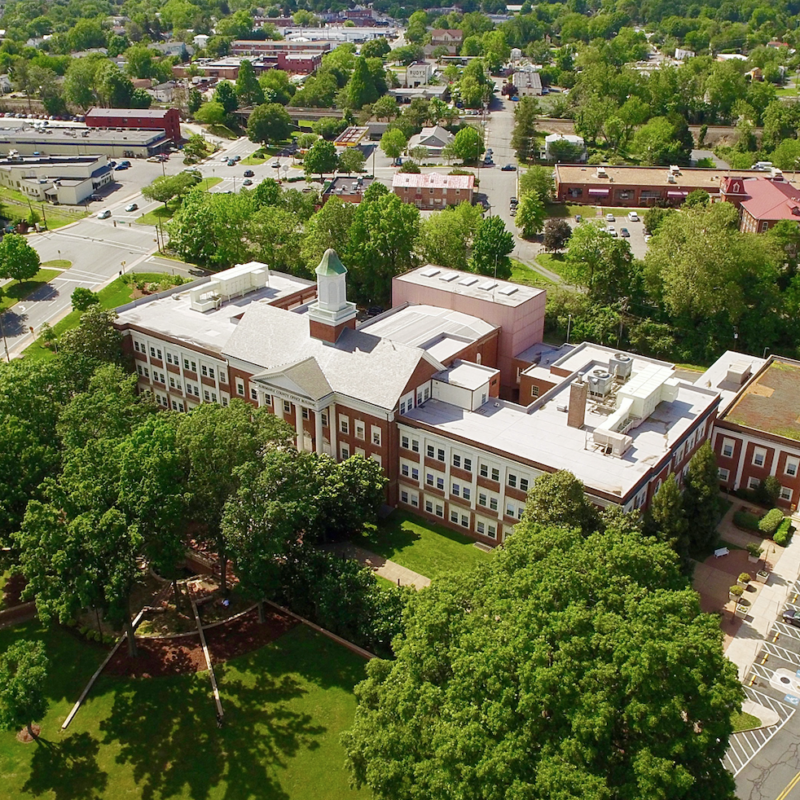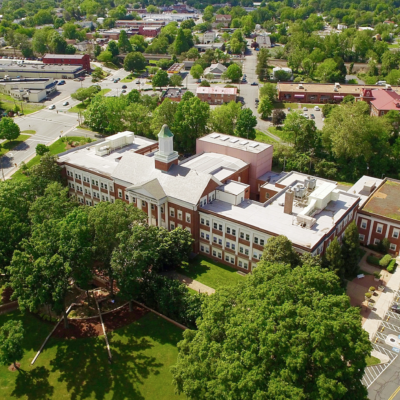At the building’s dedication ceremony on Monday, September 29, UVA President John Casteen illustrated why students have dubbed Kellogg House the “O-Hilton.” Kellogg, located on the incline of Observatory Hill, houses 192 students and nine RAs on five floors, offering the best views of all University student housing. From the fifth floor, one can see the dome of the Rotunda. It offers both wired and wireless Internet and independent heating and cooling controls in each room. Students can monitor the first-floor laundry room’s activity with their computer and be notified when the load is done. Each floor has a study room area with a flat-screen TV and a DVD player.
The $18.8 million dorm was opened in August for first-year students and is the first of seven new dorms planned to replace the 11 residence halls that populate the Alderman Road residence area. According to the Housing Division website, the six-phase project will span 10 to 12 years. Kellogg House is said to be the thumbprint for future student residence halls.
|
What, no butler? Students get just about everything else at the newest dorm, located on Observatory Hill. |
“The new residence halls that are being built include more opportunities for community building within each facility,” says UVA spokesperson Carol Wood. “They are designed to meet the needs of a new generation of students.”
Dobie House, part of the Alderman dorm archipelago, will be the first of the old dormitories to be demolished after graduation next May, and is expected to be finished by 2011.
By 2017, UVA is planning to have all seven of the new dorms built and ready to house students, at an estimated total cost of about $200 million. When the complete replacement project is finished, there will be almost 500 more beds.
Named after Robert Kellogg, who taught English at UVA from 1957 until 1999, the new dorm is in line with the idea of joining housing and learning, said Casteen at the dedication. Kellogg House has lounges and study rooms that could become places where professors can teach their classes.
Although Kellogg is not a green building by U.S. Green Building Council’s LEED standards, Casteen pointed to “sustainable” features like light motion sensors and landscaping that includes drought-resistant plants.
C-VILLE welcomes news tips from readers. Send them to news@c-ville.com.






